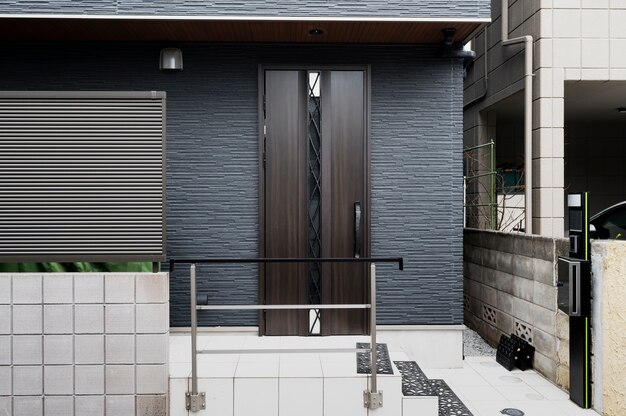
Sponsored article
Modern guard houses play a crucial role in securing properties, blending innovative designs with state-of-the-art functionalities to offer enhanced protection. As security needs evolve, guard house design becomes more sophisticated, incorporating advanced technologies and ergonomic features to effectively monitor and control access. This article delves into the key aspects of modern guard house design, exploring how materials, ergonomics, and smart technologies converge to create secure and efficient environments.
In the construction of modern guard houses, the use of advanced materials and technologies plays a crucial role in enhancing both security and durability. Contemporary guard houses often incorporate high-strength steel and reinforced concrete to ensure robust structures that can withstand external forces and potential security threats. The integration of ballistic-rated windows and doors adds an additional layer of protection, making it difficult for unauthorized entry. Alongside, materials such as insulated panels and composite cladding contribute to energy efficiency and climate control, ensuring comfort and safety for occupants regardless of weather conditions.
Besides materials, the application of technologies elevates the security features of guard houses. State-of-the-art surveillance systems, including high-definition cameras and motion sensors, are commonly integrated to provide continuous monitoring and threat detection. Access control technologies such as key-fob systems and biometric scanners further safeguard entries, restricting access to authorized personnel only. Incorporating such materials and technologies, as seen in the products available at https://cdnportable.com, ensures that modern guard houses meet the stringent demands of security and operational efficiency.
When considering guard house design, the integration of ergonomics and aesthetics plays a critical role in enhancing both functionality and personnel comfort. Ergonomic design ensures that the layout and features of a guard house are optimized for the physical well-being of security personnel, reducing fatigue and improving efficiency. Elements such as adjustable seating, strategically placed equipment, and easy access to essential controls are vital in minimizing physical strain during long shifts, allowing guards to remain vigilant and responsive. This attention to comfort directly contributes to a heightened state of alertness, which is crucial in maintaining effective security operations.
In tandem with ergonomics, aesthetic considerations are pivotal in creating a guard house that not only performs its security function but also complements the surrounding environment. A well-designed guard house with a pleasing aesthetic can project authority while seamlessly integrating with the landscape or architectural style of the property. This balance of design and aesthetics helps foster a positive perception for visitors and occupants, reinforcing the guard house as a sophisticated, functional, and necessary element in modern security strategies.
Integrating smart security systems into the design of modern guard houses is revolutionizing the way we approach surveillance and access control. As technology evolves, the guard house is no longer just a physical barrier; it has become a hub of advanced security operations. The integration of smart security technologies allows for real-time surveillance, ensuring every angle is covered with high-definition cameras and sophisticated monitoring systems. This level of surveillance provides an unprecedented layer of security, enabling guards to respond swiftly to potential threats. With intelligent analytics, these systems can identify suspicious behavior, automatically alerting security personnel to any anomalies. It’s this proactive approach that is setting new standards in security management.
In addition to surveillance, integrating smart access control mechanisms within guard houses offers significant advantages. Modern access control systems utilize biometric scans, RFID technology, and mobile credentials to ensure that entry is granted only to authorized personnel. This controlled access reduces the risk of unauthorized entry and enhances the overall security framework. By having these smart solutions within the guard house, security teams can manage access points seamlessly, ensuring a fortified perimeter and fostering a safe, secure environment. In essence, the fusion of smart security systems with guard houses is pivotal in crafting comprehensive and responsive security strategies.